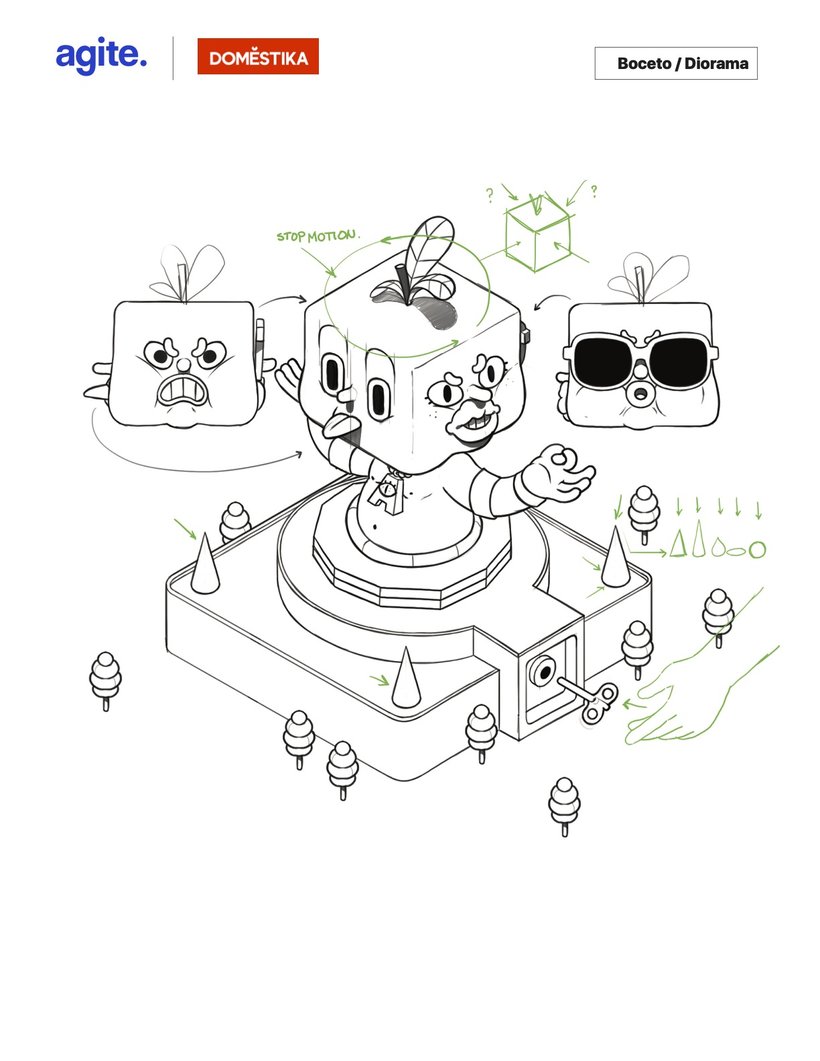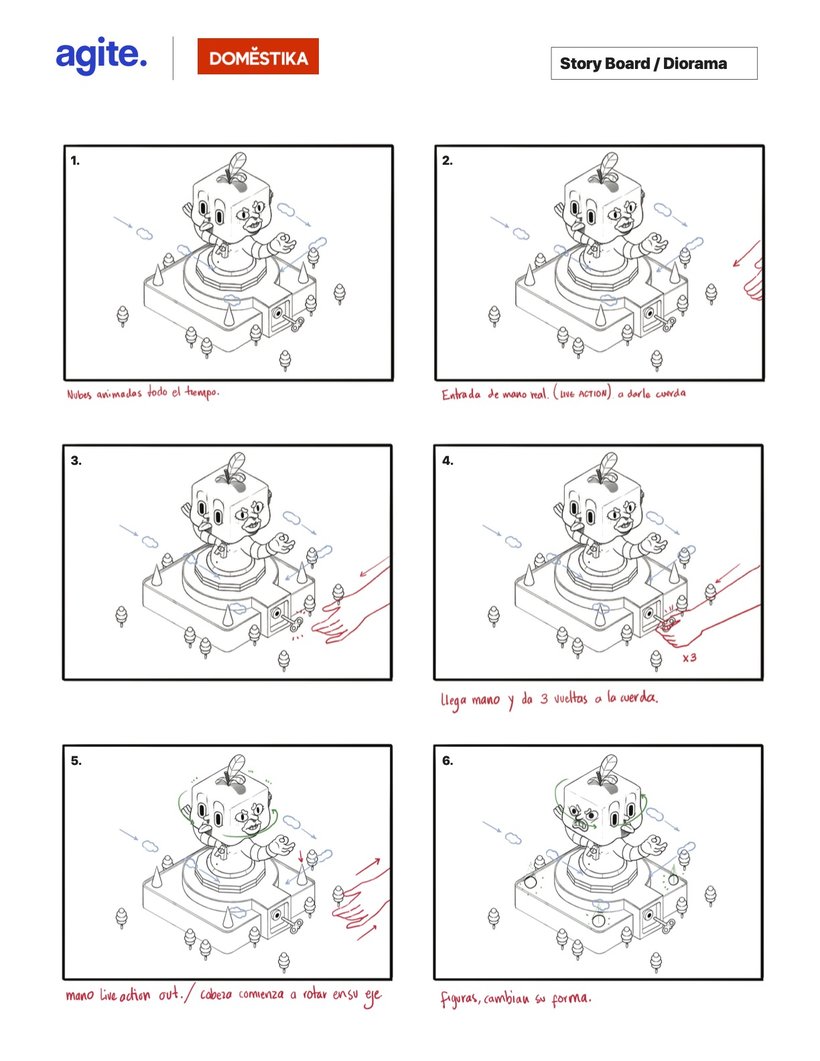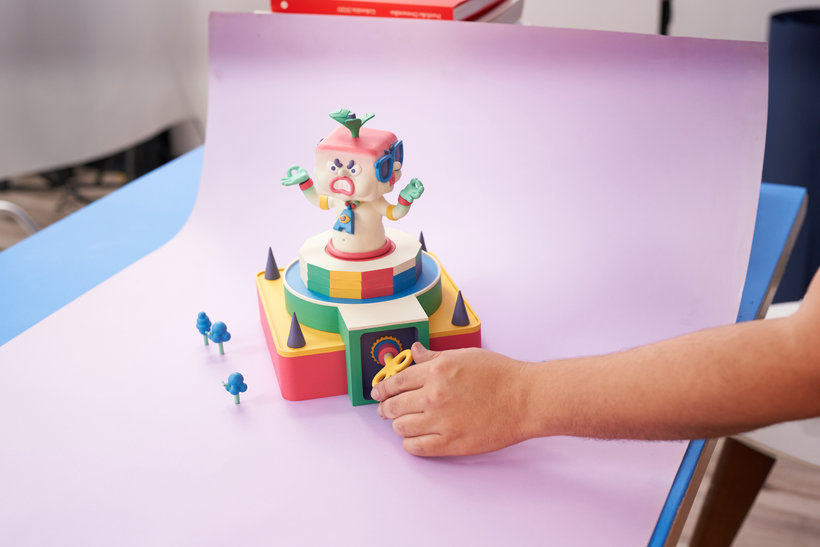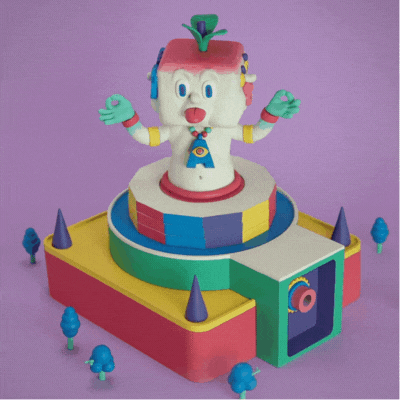Mixed Media Animation: Bring Your Creations to Life
Course final project
A course by Estudio Agite , Graphic Design and Animation Studio
About the final project for: Mixed Media Animation: Bring Your Creations to Life
Mixed Media Animation: Bring Your Creations to Life
“Friends, we have come to the end of our wonderful journey through the construction and animation of a diorama using stop motion, video recording, and a lot of materials that we had at our disposal. You learned about the projects we most admire in our studio, and you discovered the artists who inspire us to continue creating every day. We learned new ways to squeeze our brains for new ideas, using simple questions to spark our creativity and force our minds to create new universes. We captured all the ideas in a sketch that led us to develop a storyboard, with which we could plan the operation of our scene, and we compressed our best ideas into a small surreal diorama. We put it together and gave it life using different techniques, until creating a hypnotic infinite sequence looping from scratch in Adobe After Effects. Then, we applied an assortment of tricks until we ended up with a visually captivating, fresh, and very original animated product. We are going to do a brief review of all the stages that we went through on our way to the Final Project. Preparation Brainstorm, remember that there are no bad ideas. Keep a list of all the nonsense that comes to mind. Give yourself time. There is no rush, carry your list in your pocket, remember that ideas can arrive at any time. Then, put your ideas into a sketch, either using collage, drawing, digital retouching. Add color to it and define the palette that your scene will have. Remember to be very clear about the scales and sizes of your scene. Remember that from there, you can begin to imagine what materials you can use to represent all the elements of your diorama: your props (toys, objects, etc.) or built by you.




Partial transcription of the video
“Final project We reached the end of the course. We loved having you and share all our experience and knowledge. But before saying goodbye we will give you some tips to build your final project. Brainstorm ideas. Remember that no idea is bad. Put all your ideas into a sketch, and from now on start thinking what materials or what shapes will give life to your diorama. Own props, toys, play dough, any object or even something built by you. Remember to define in a "storyboard" the shot of the camera and all the movements and actions that your idea will have. Try to be very clear so that all tho...”
This transcript is automatically generated, so it may contain mistakes.
Course summary for: Mixed Media Animation: Bring Your Creations to Life
-
Category
3D & Animation -
Software
Adobe After Effects, Adobe Photoshop -
Areas
2D Animation, Animation, Stop Motion

Estudio Agite
A course by Estudio Agite
Agite is an independent graphic design and animation studio founded by David Henao, Julián Henao and Diana Posada that uses illustration, animation, infographics, and 3D or hand modeling to overcome creative roadblocks in visual communication. They have worked with clients like the Wall Street Journal, Metro de Medellín, and Bancolombia.
The goal of this Medellín-based studio is to create graphic design with purpose by transferring all of their skills and experience into projects that focus on education, art, innovation, and sharing knowledge.
- 100% positive reviews (22)
- 735 students
- 29 lessons (6h 46m)
- 29 additional resources (9 files)
- Online and at your own pace
- Available on the app
- Audio: Spanish
- Spanish · English · Portuguese · German · French · Italian · Polish · Dutch
- Level: Beginner
- Unlimited access forever






